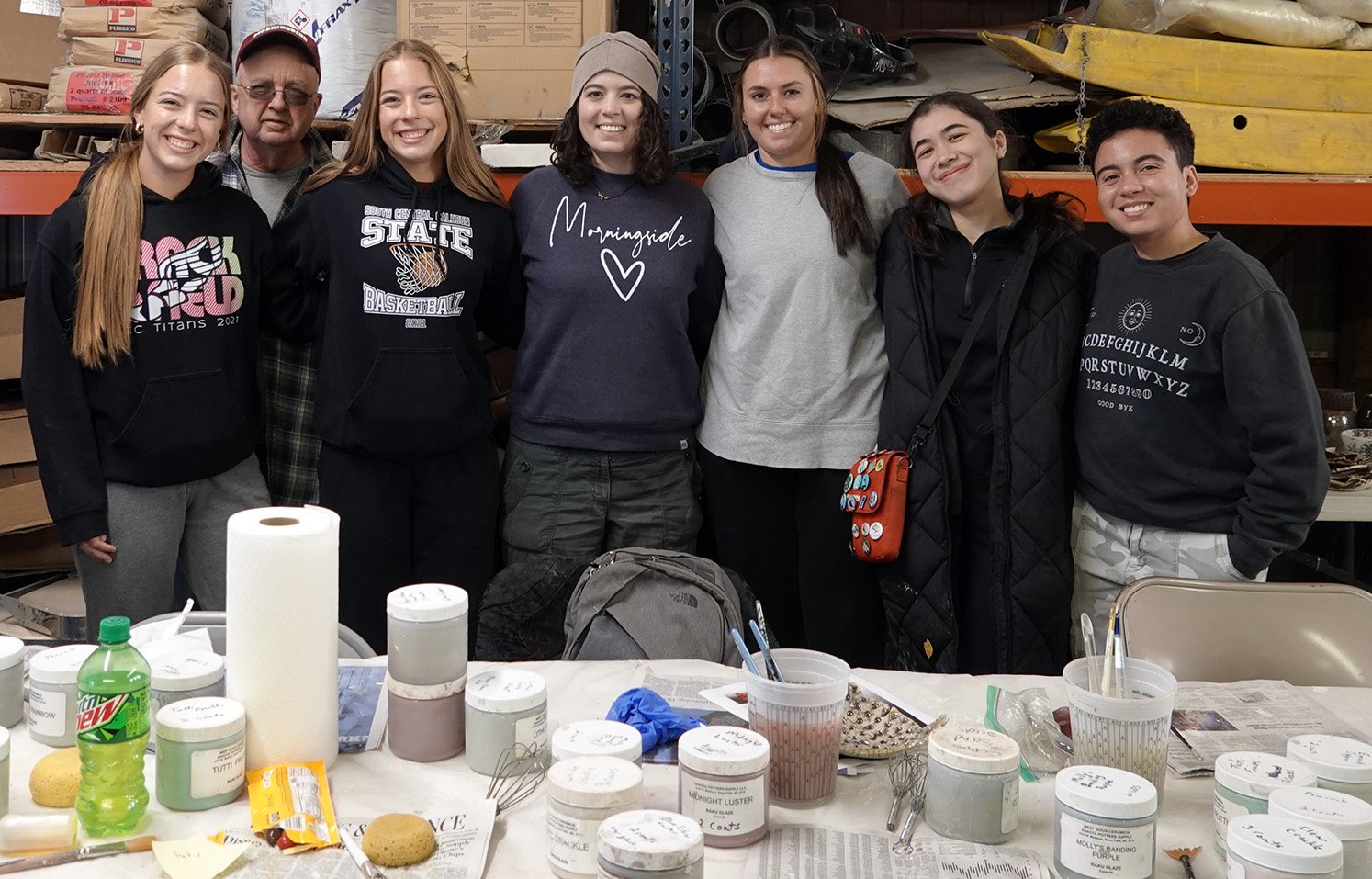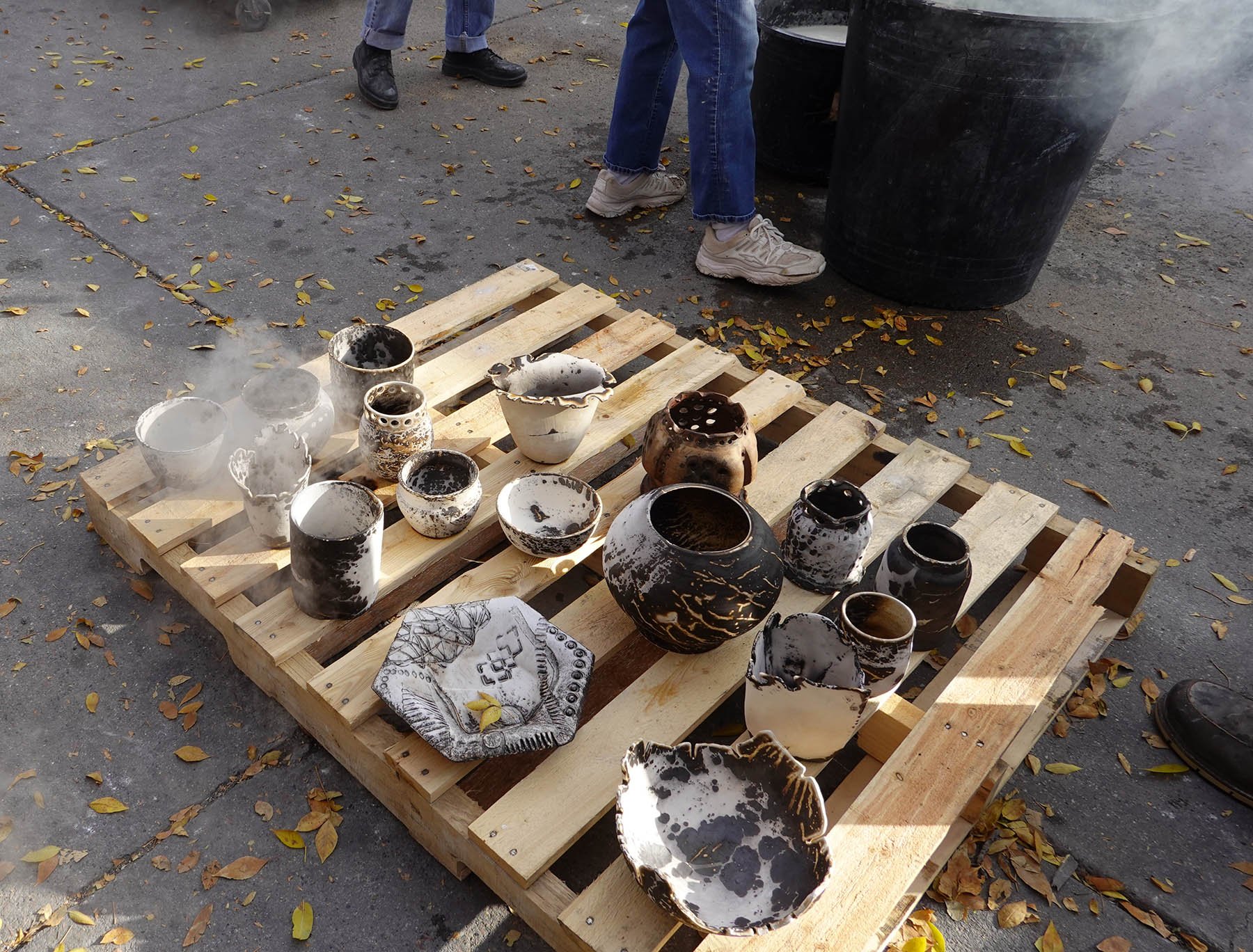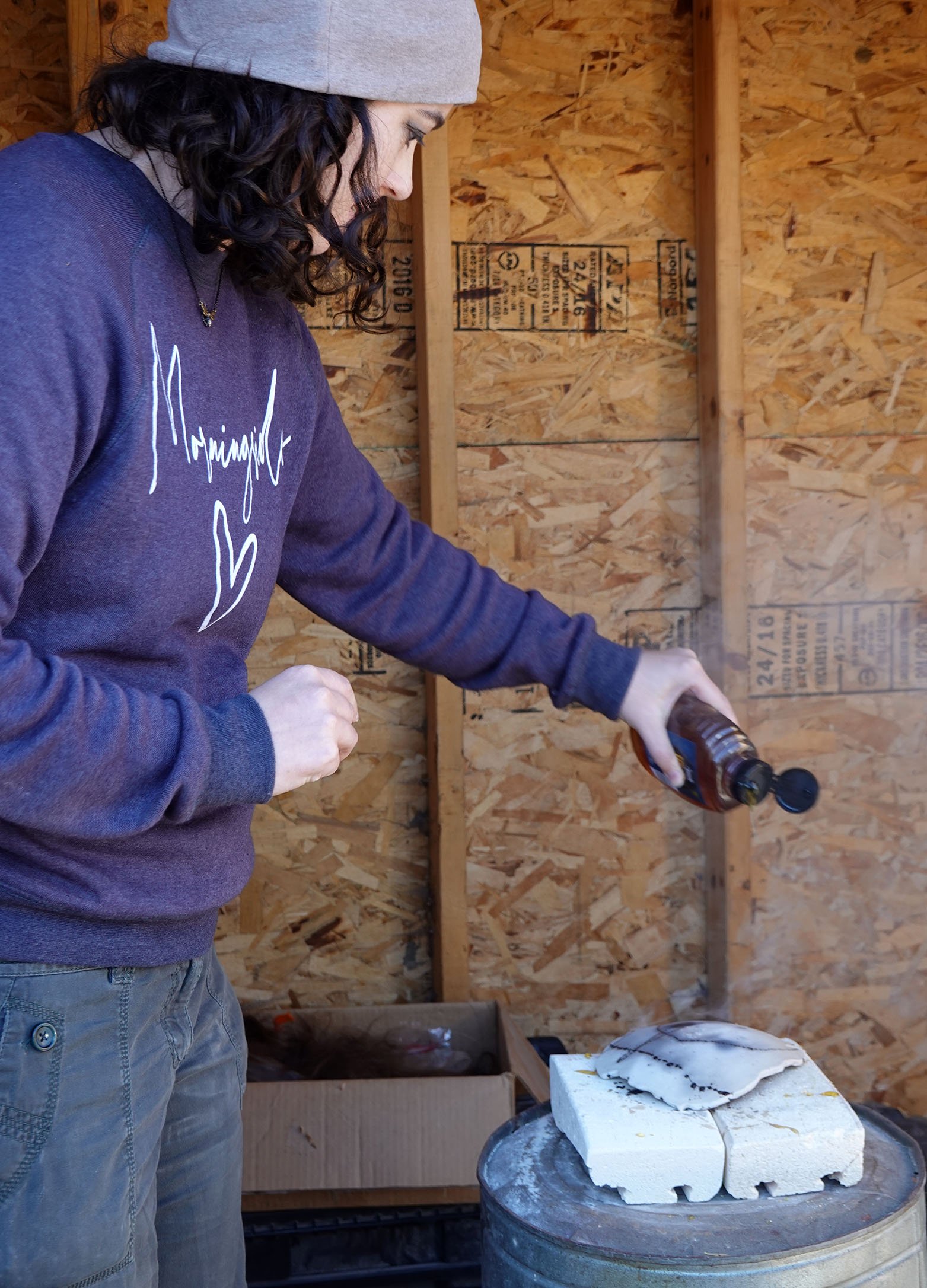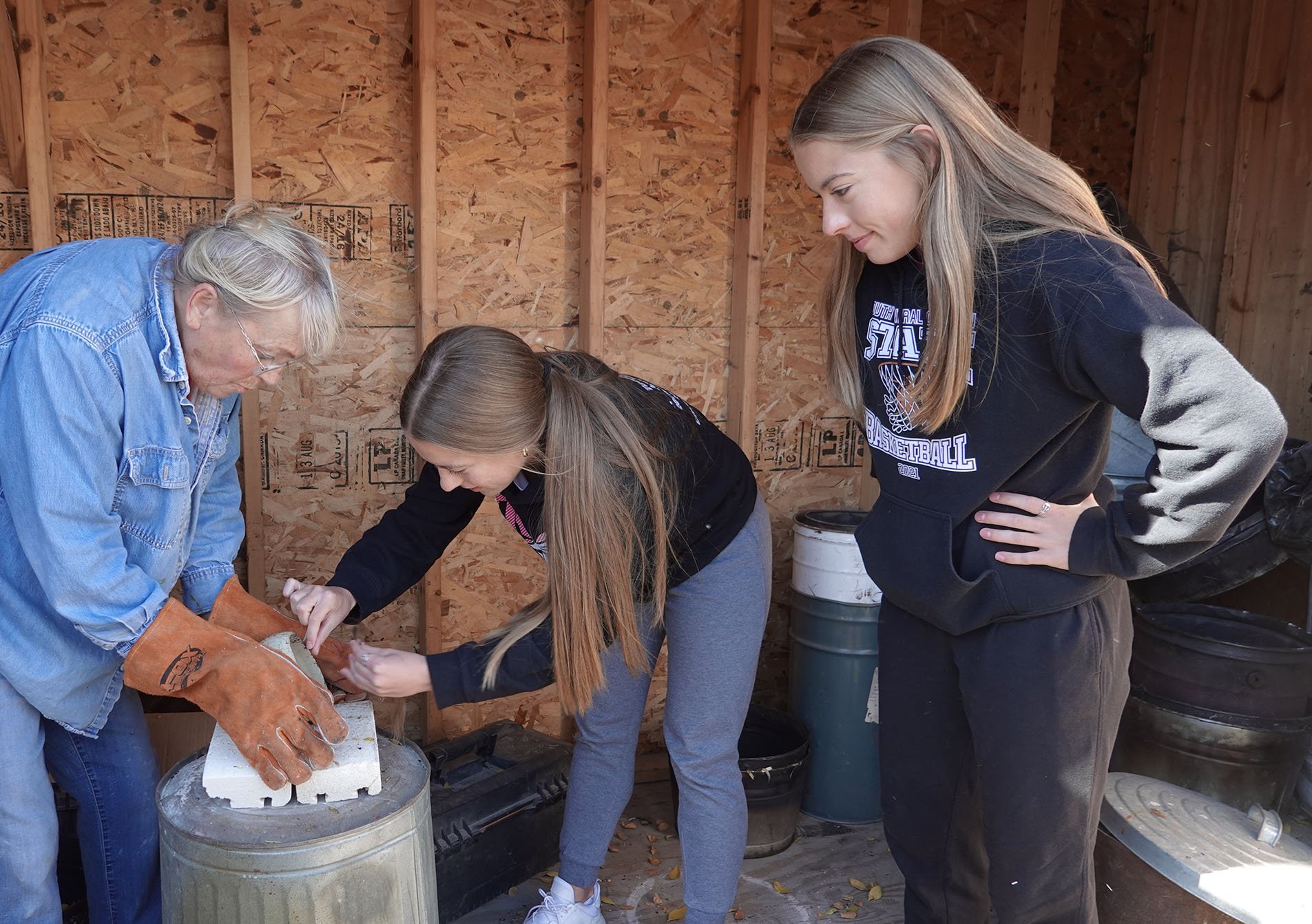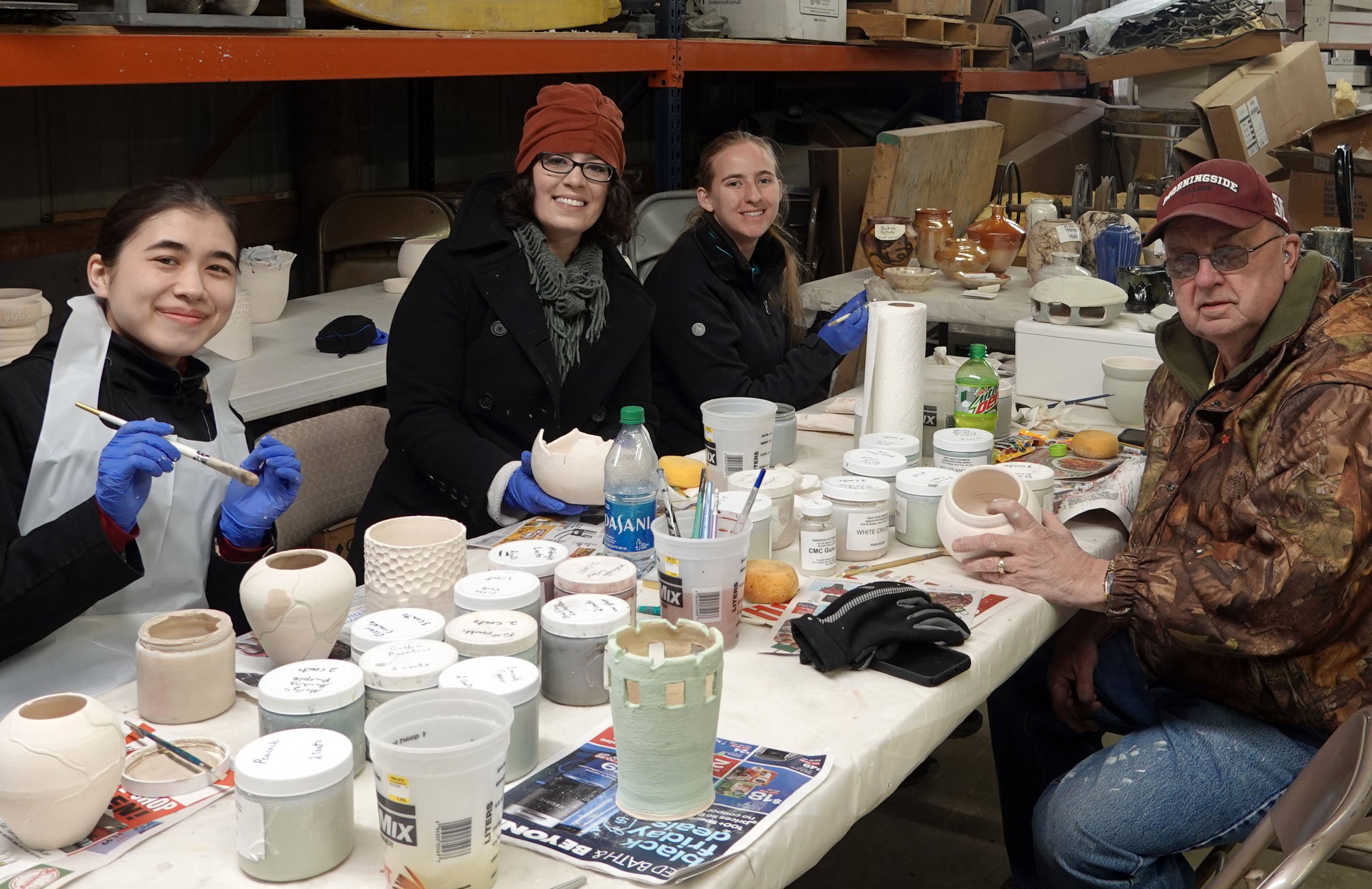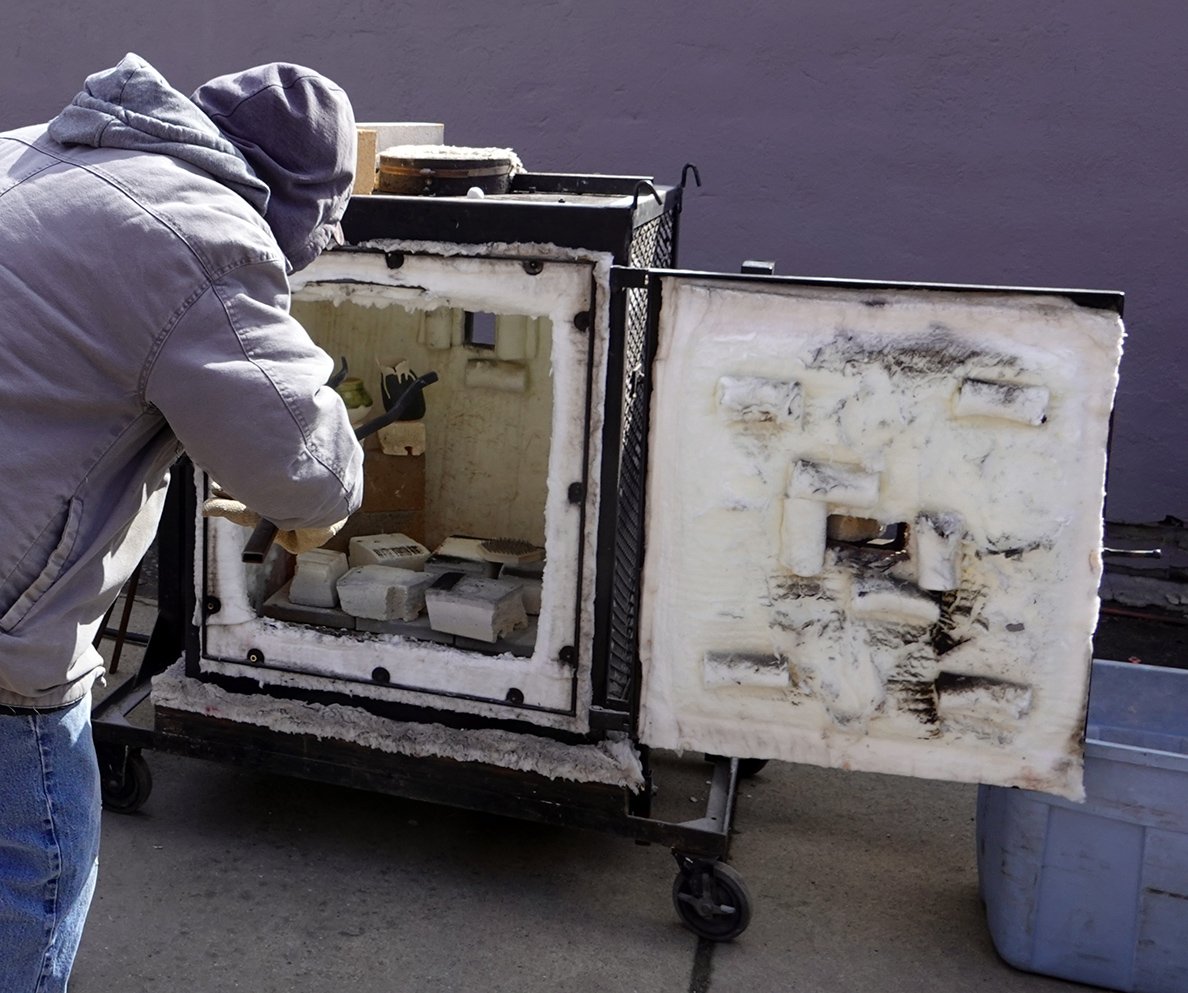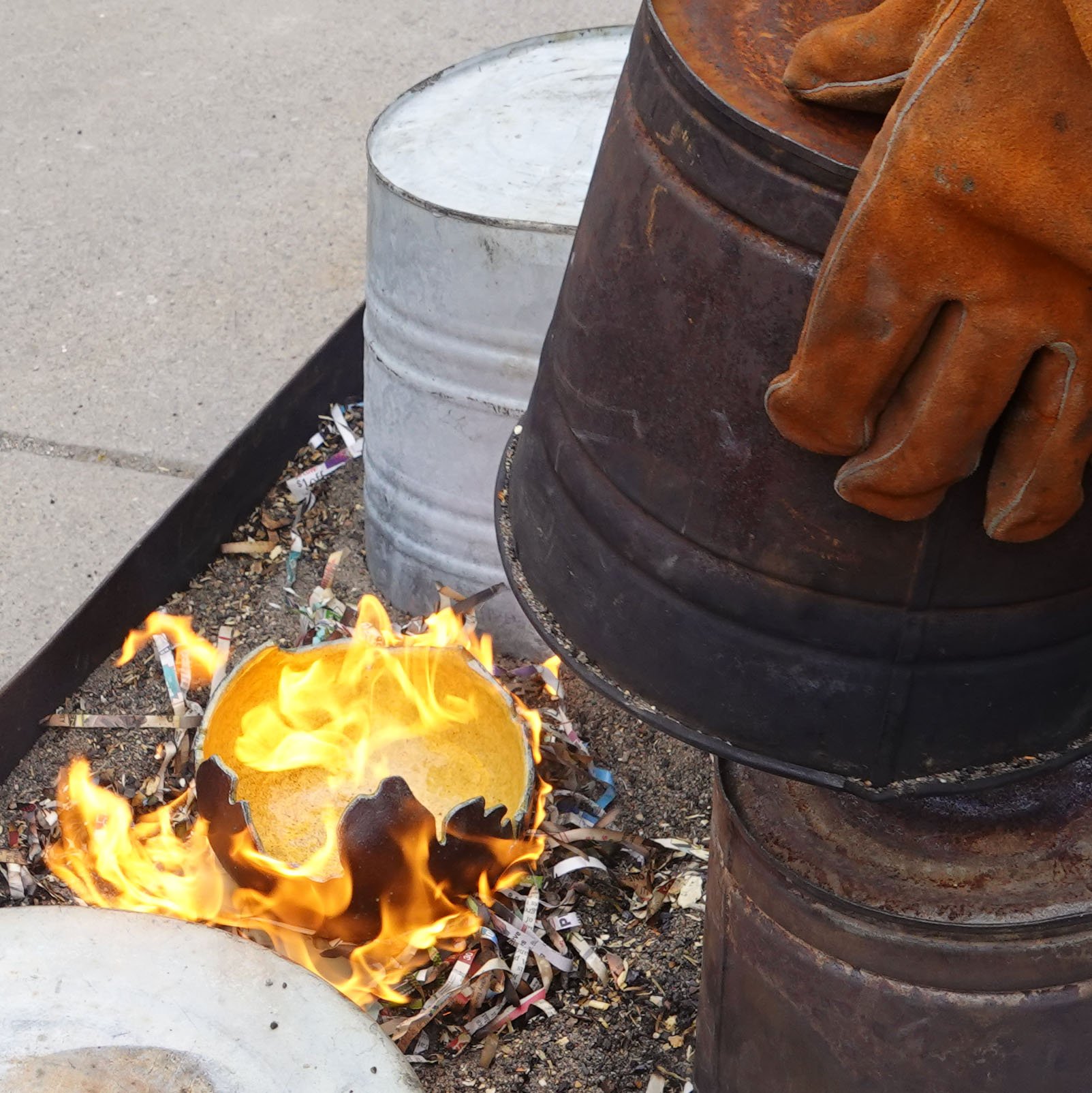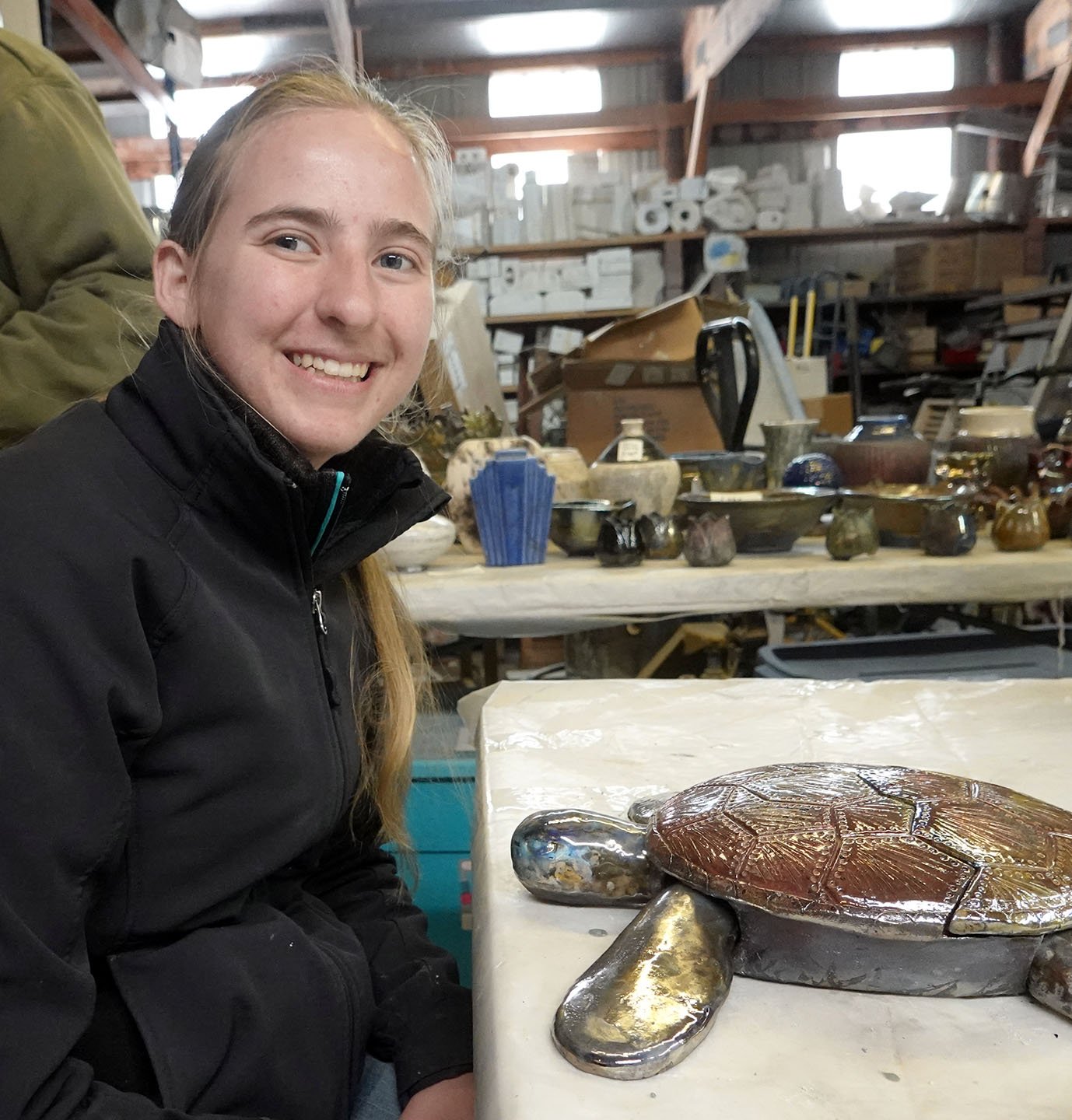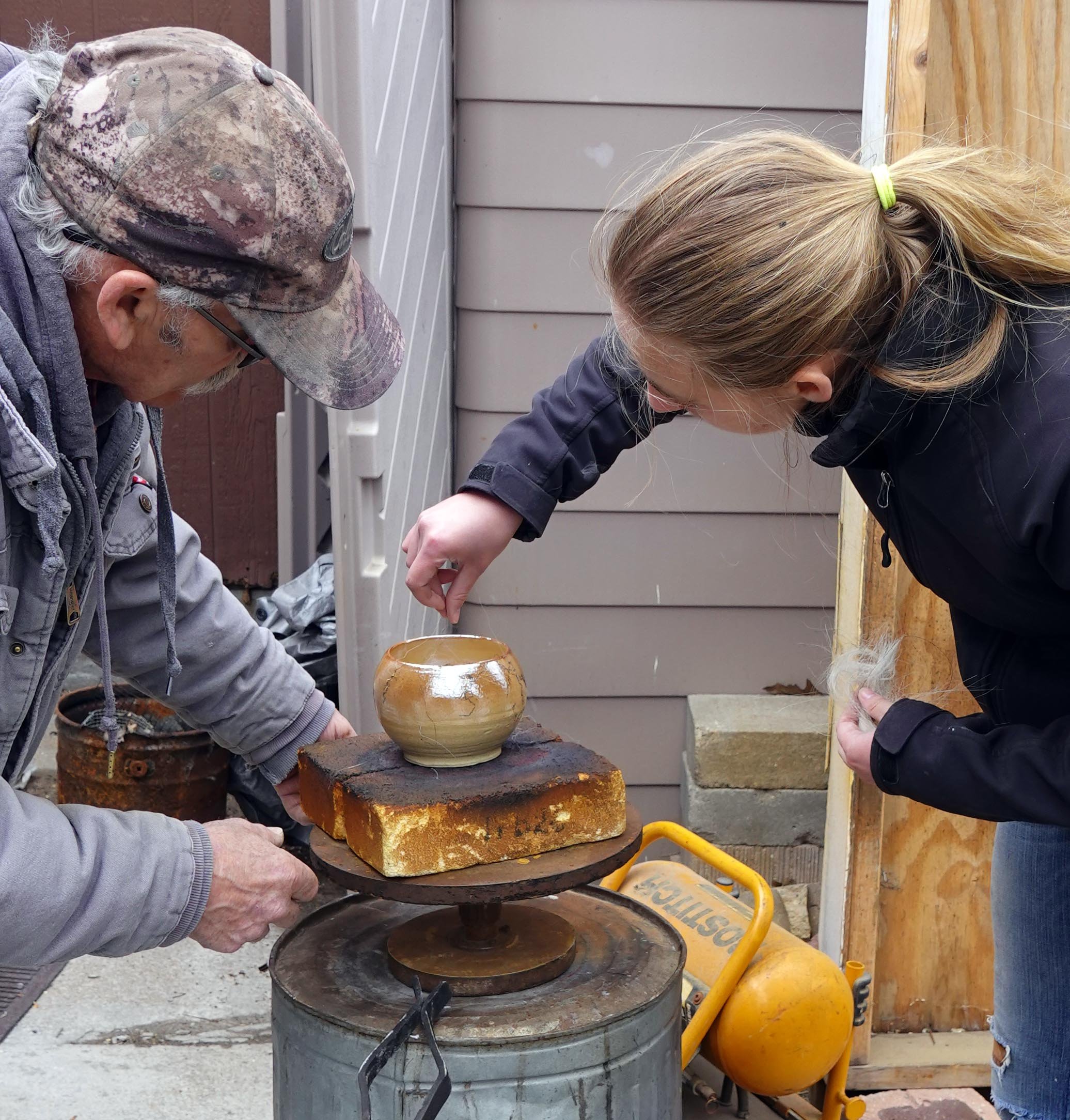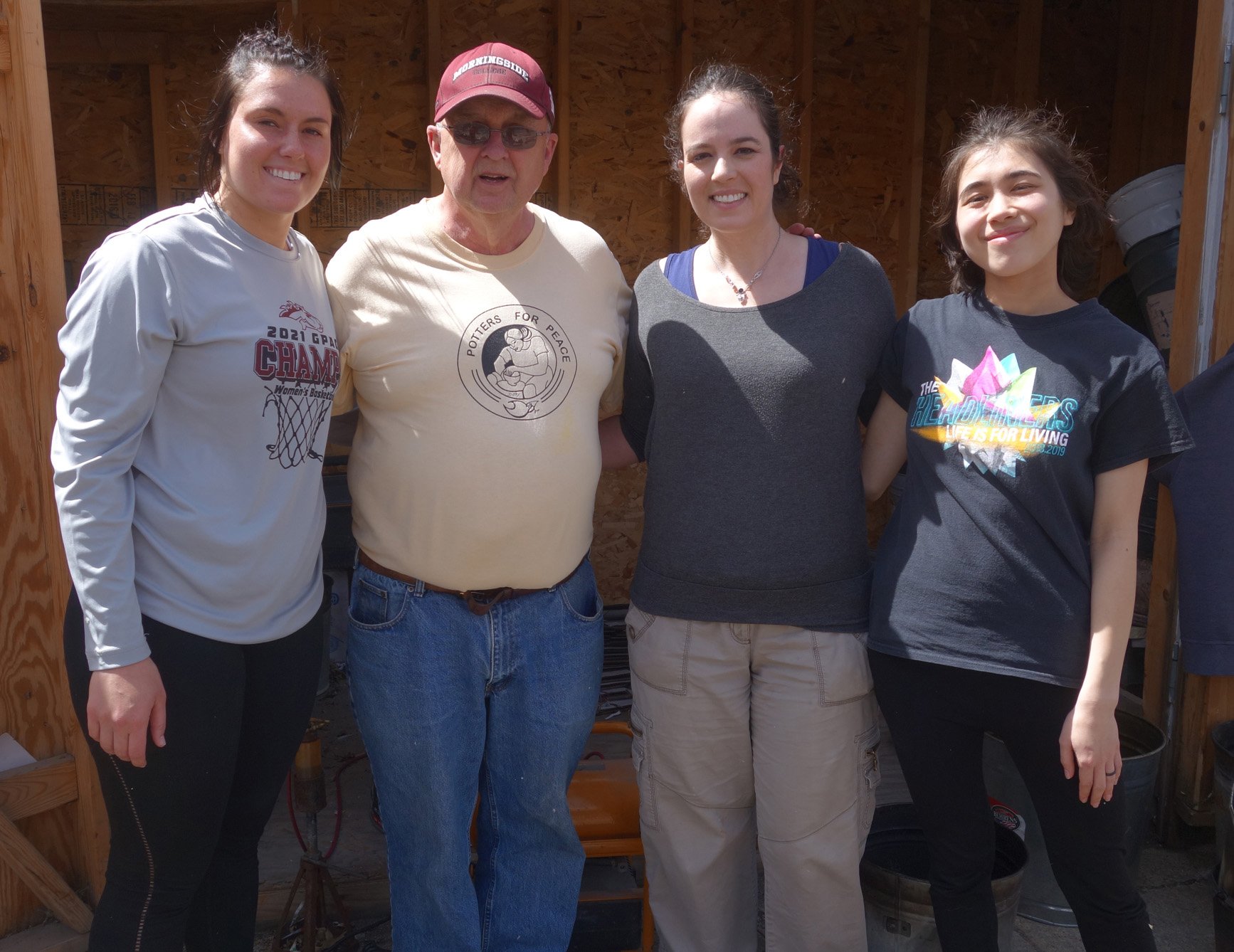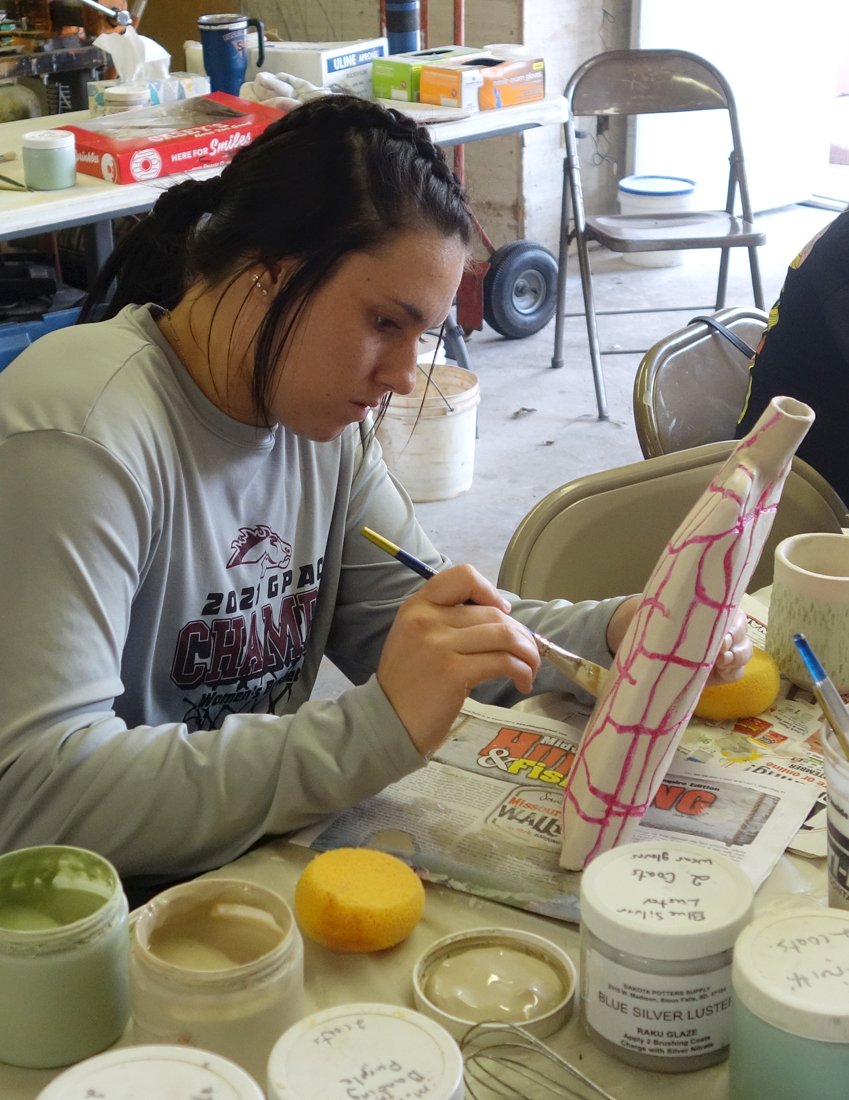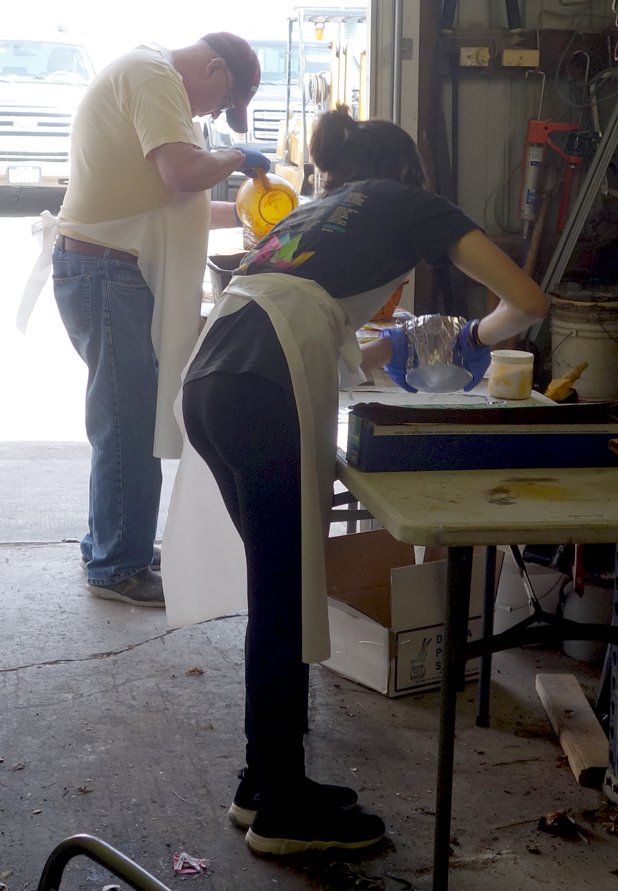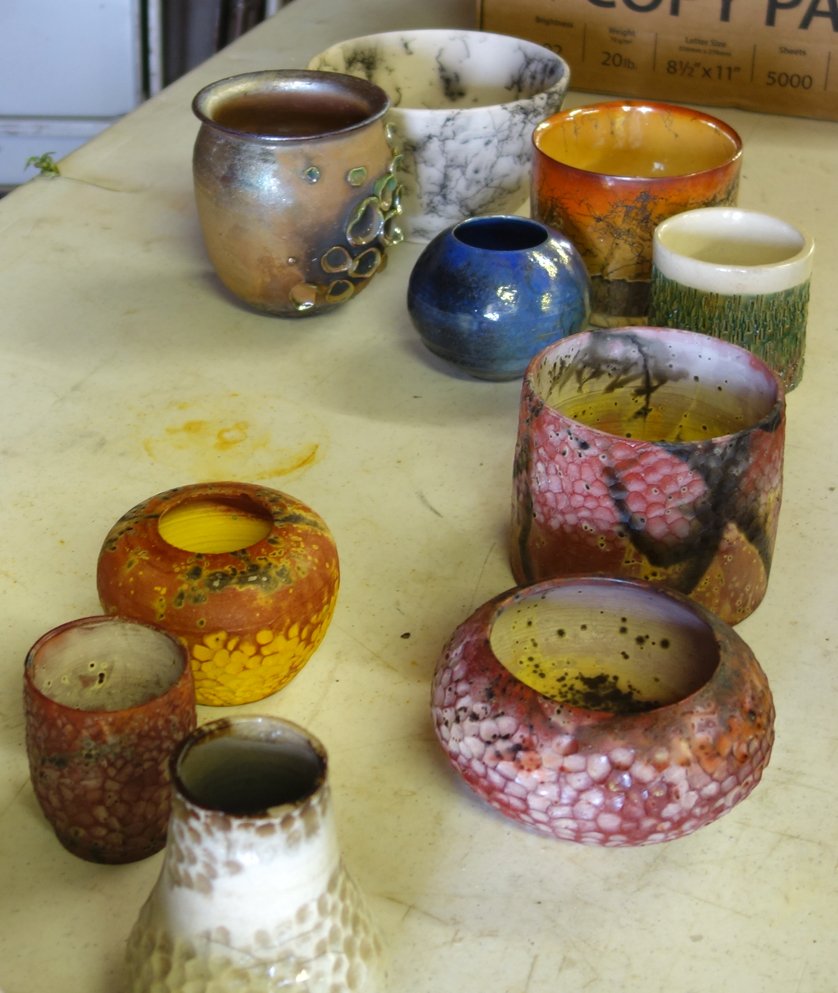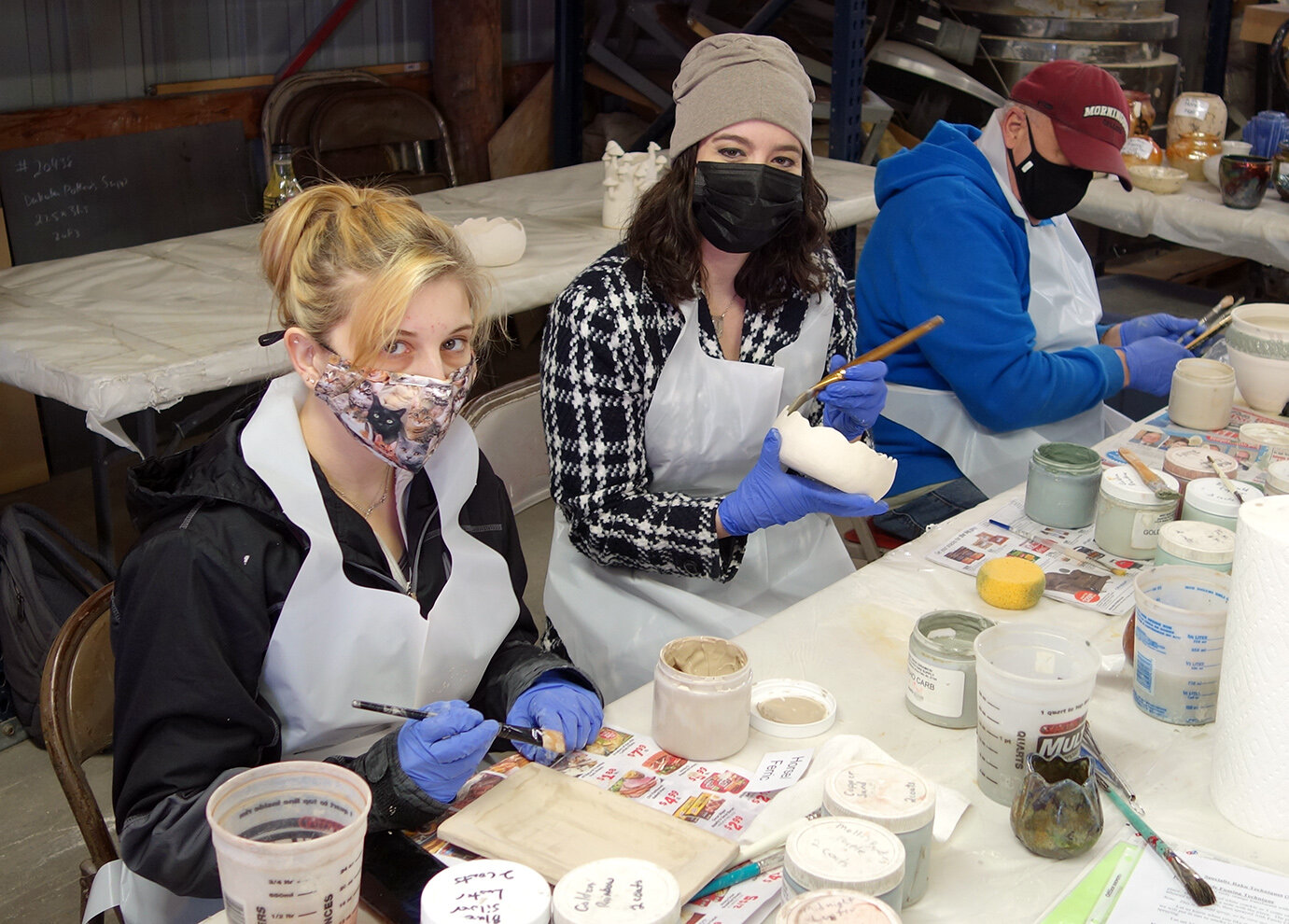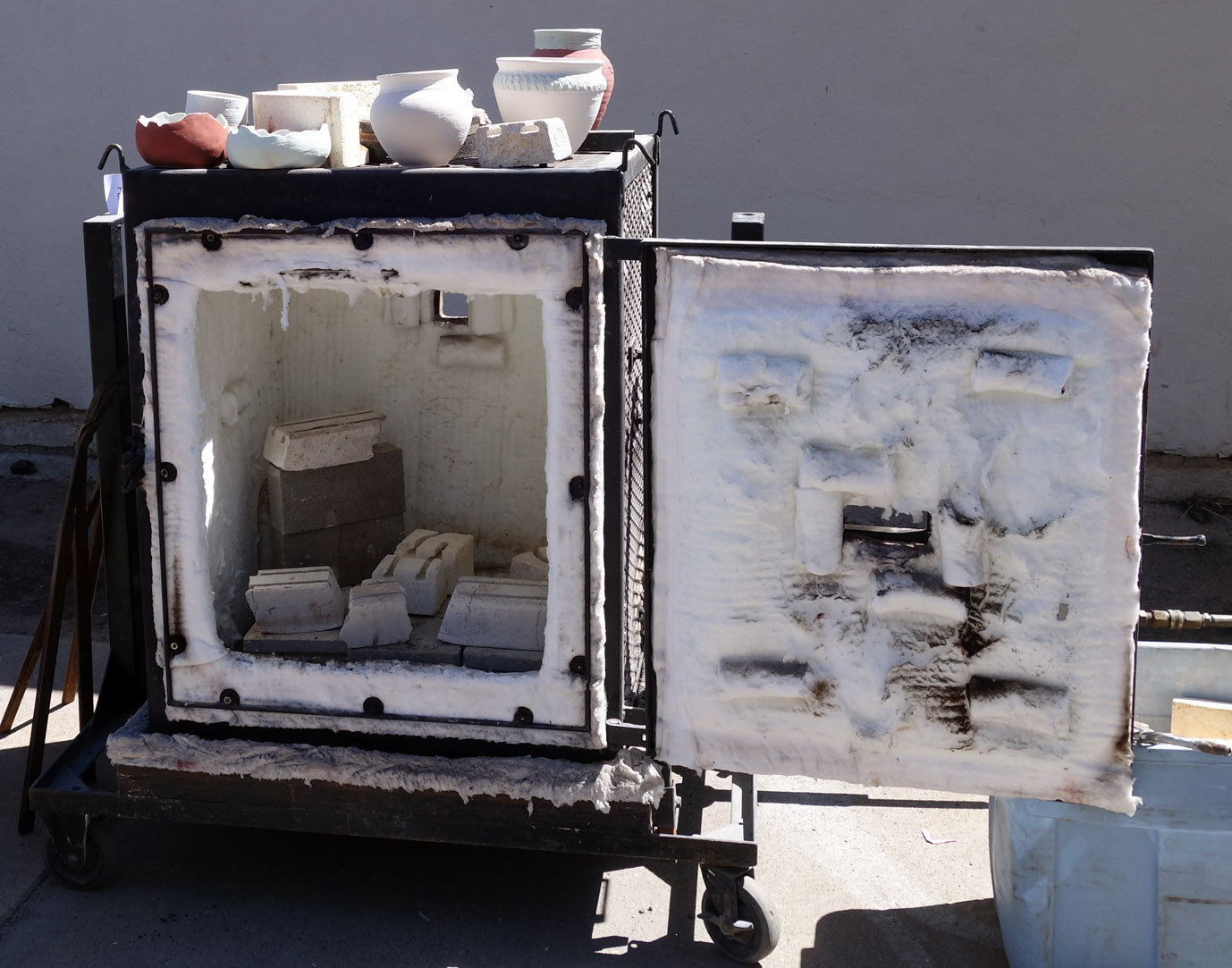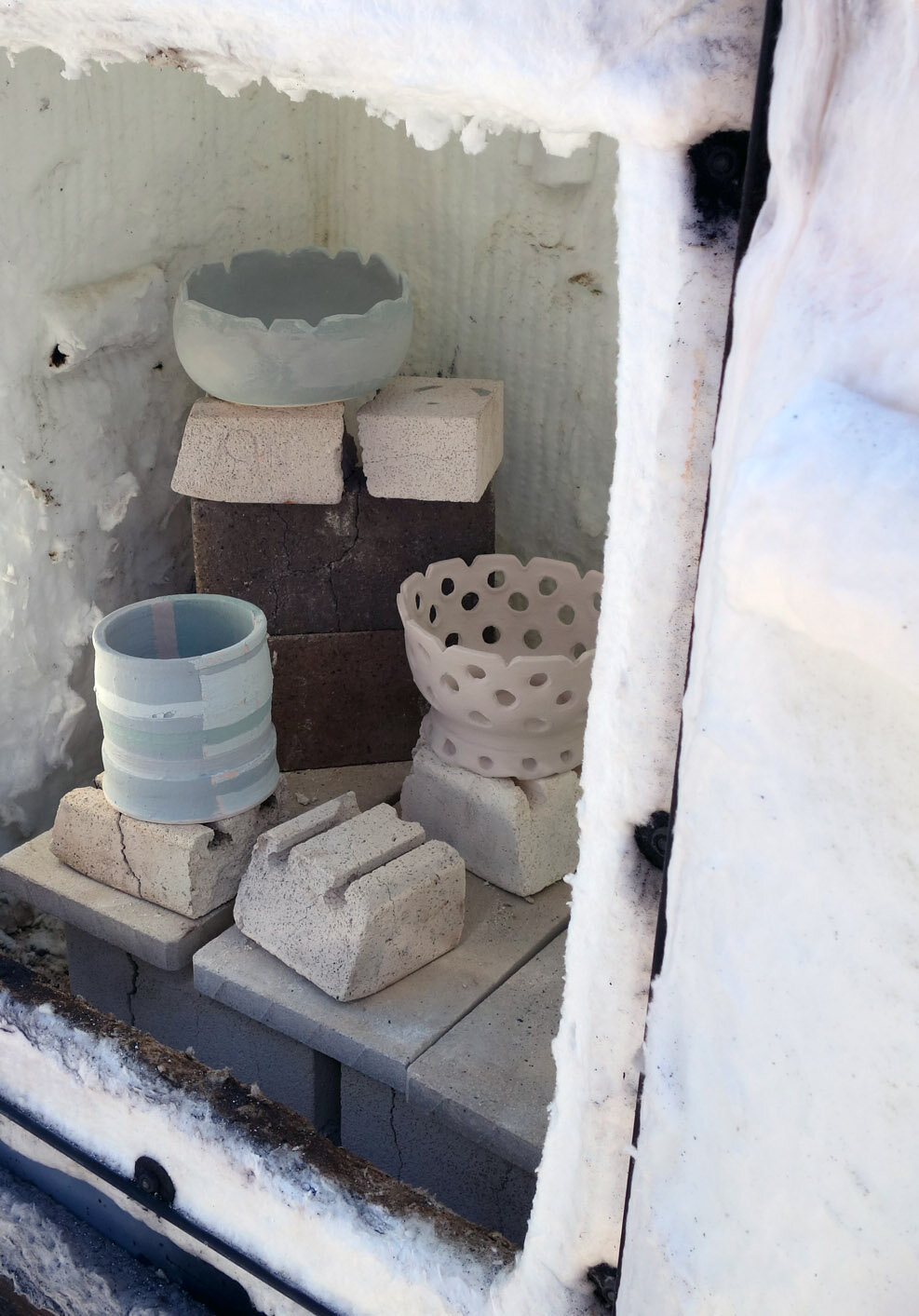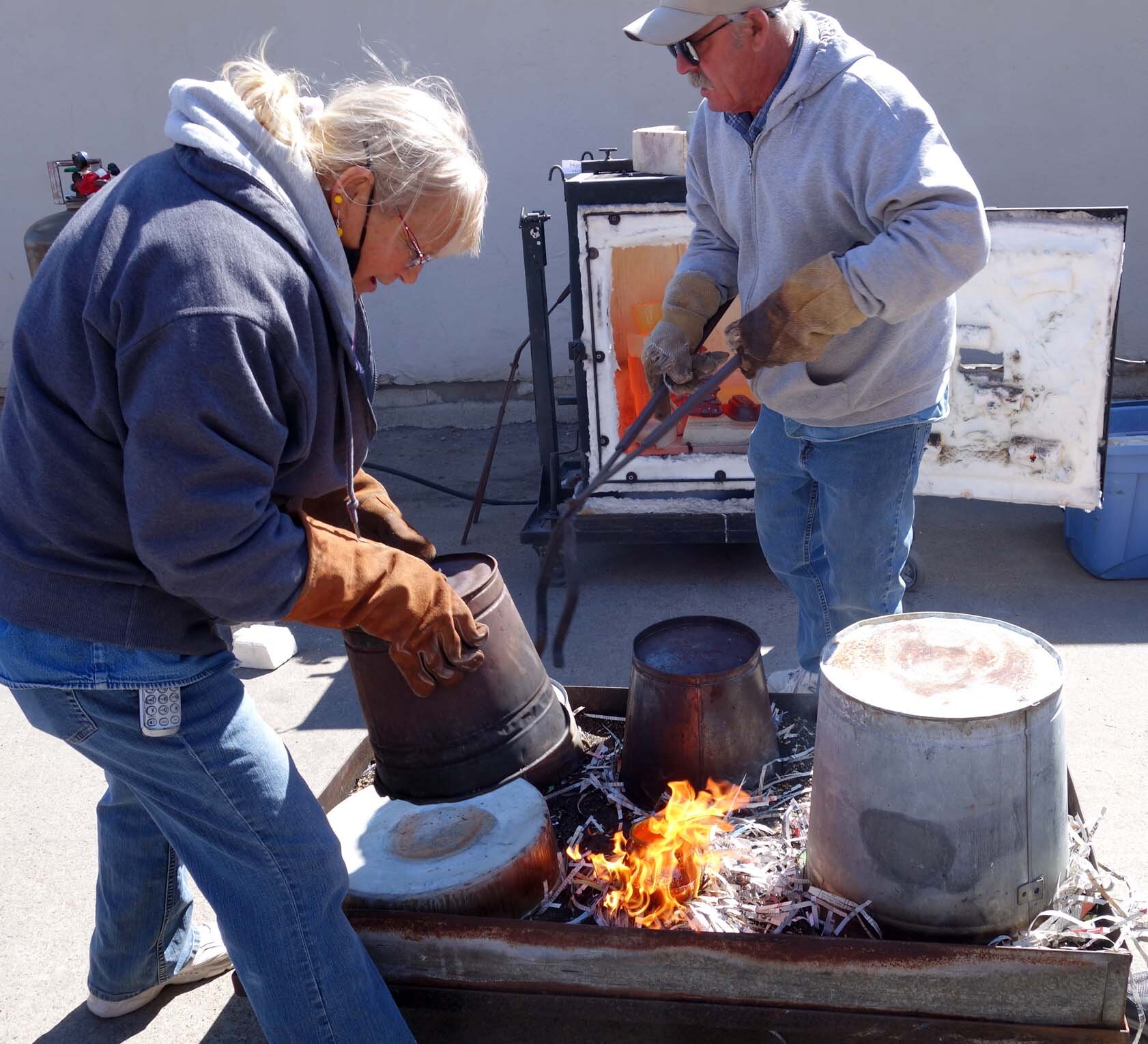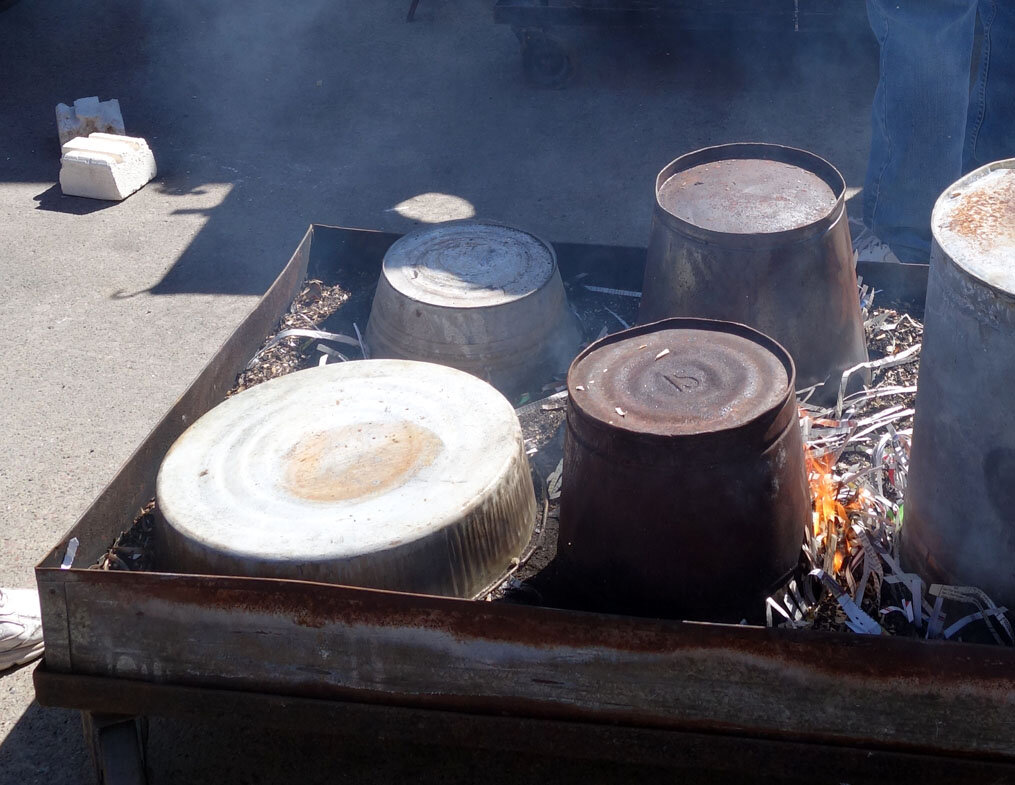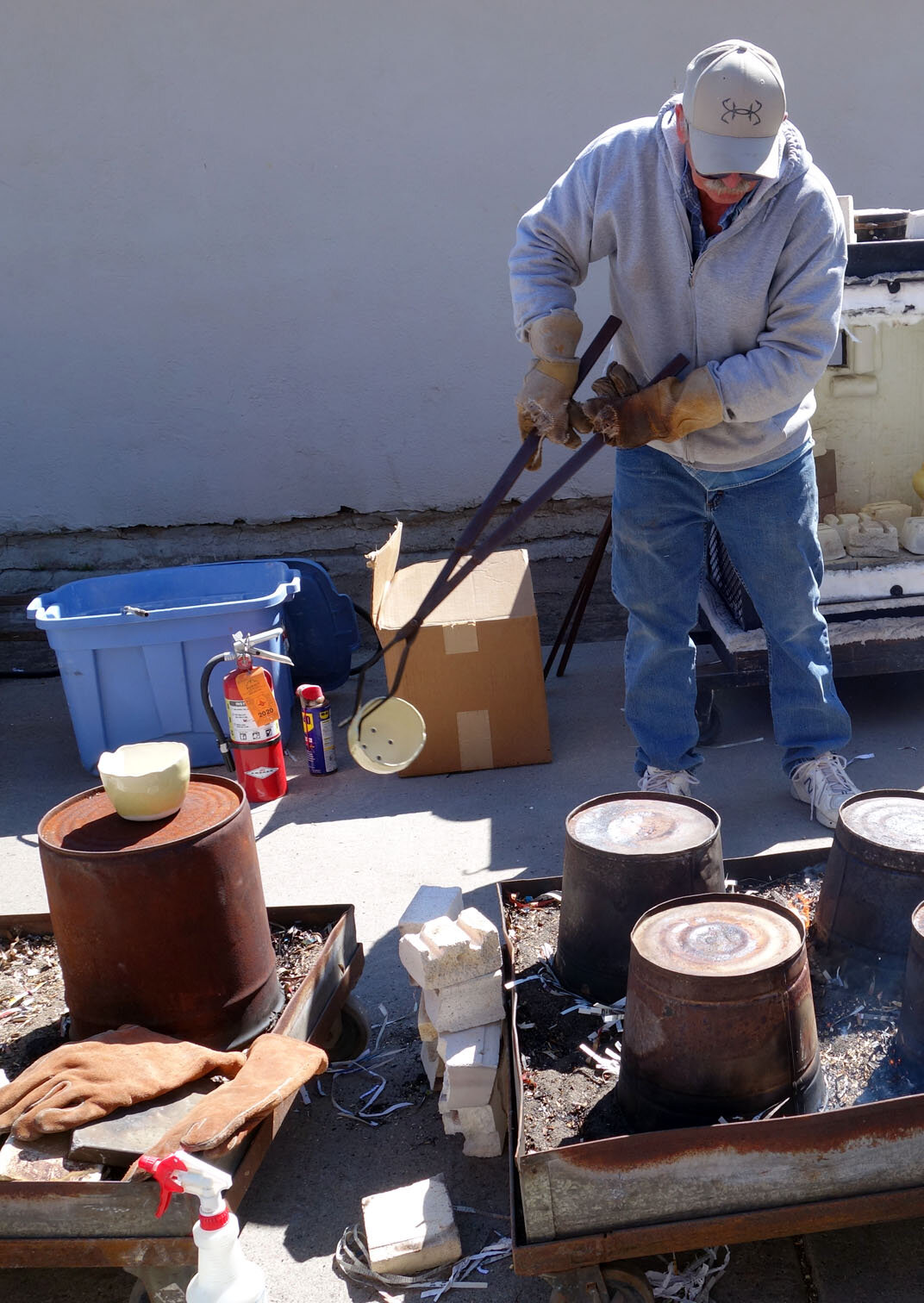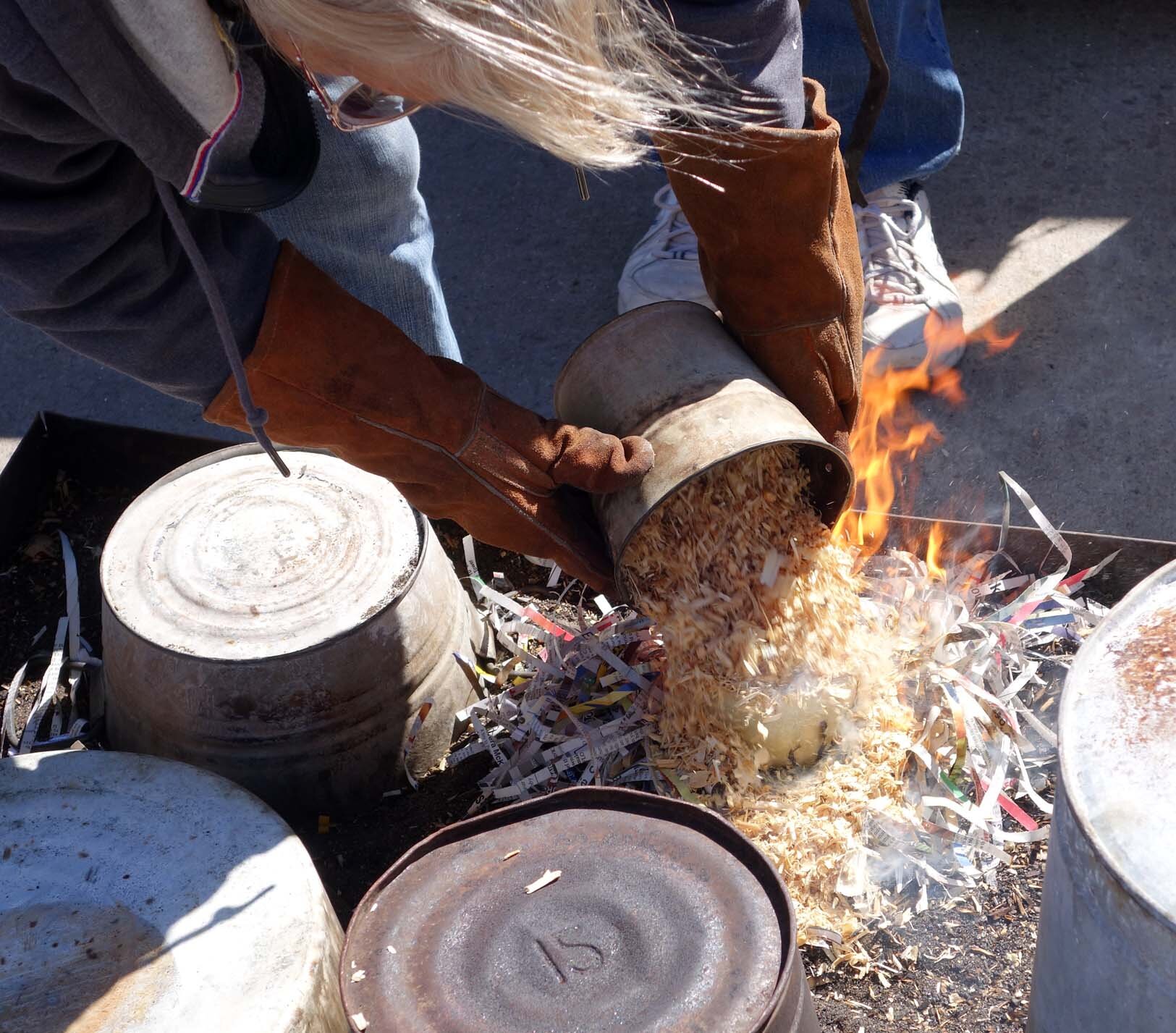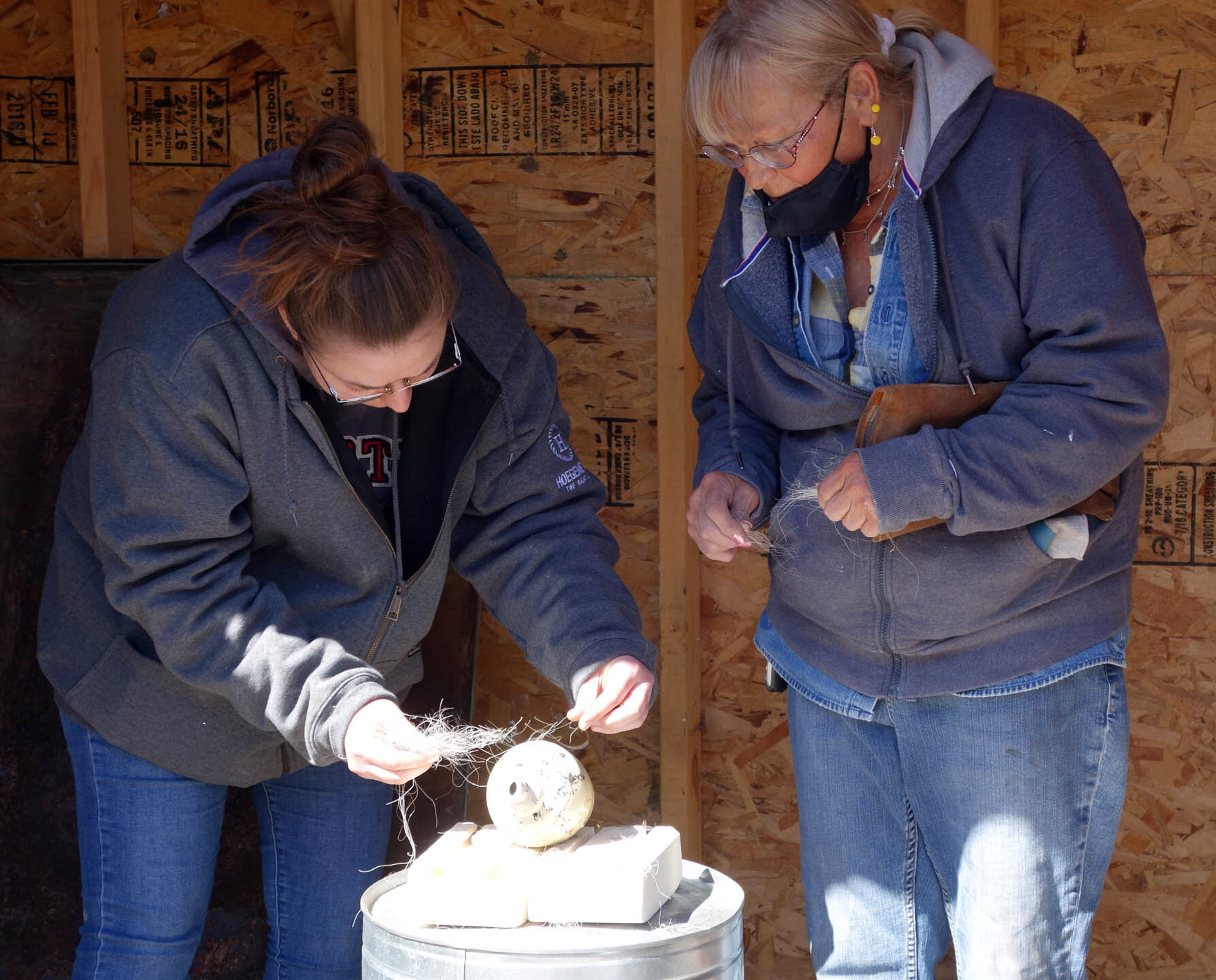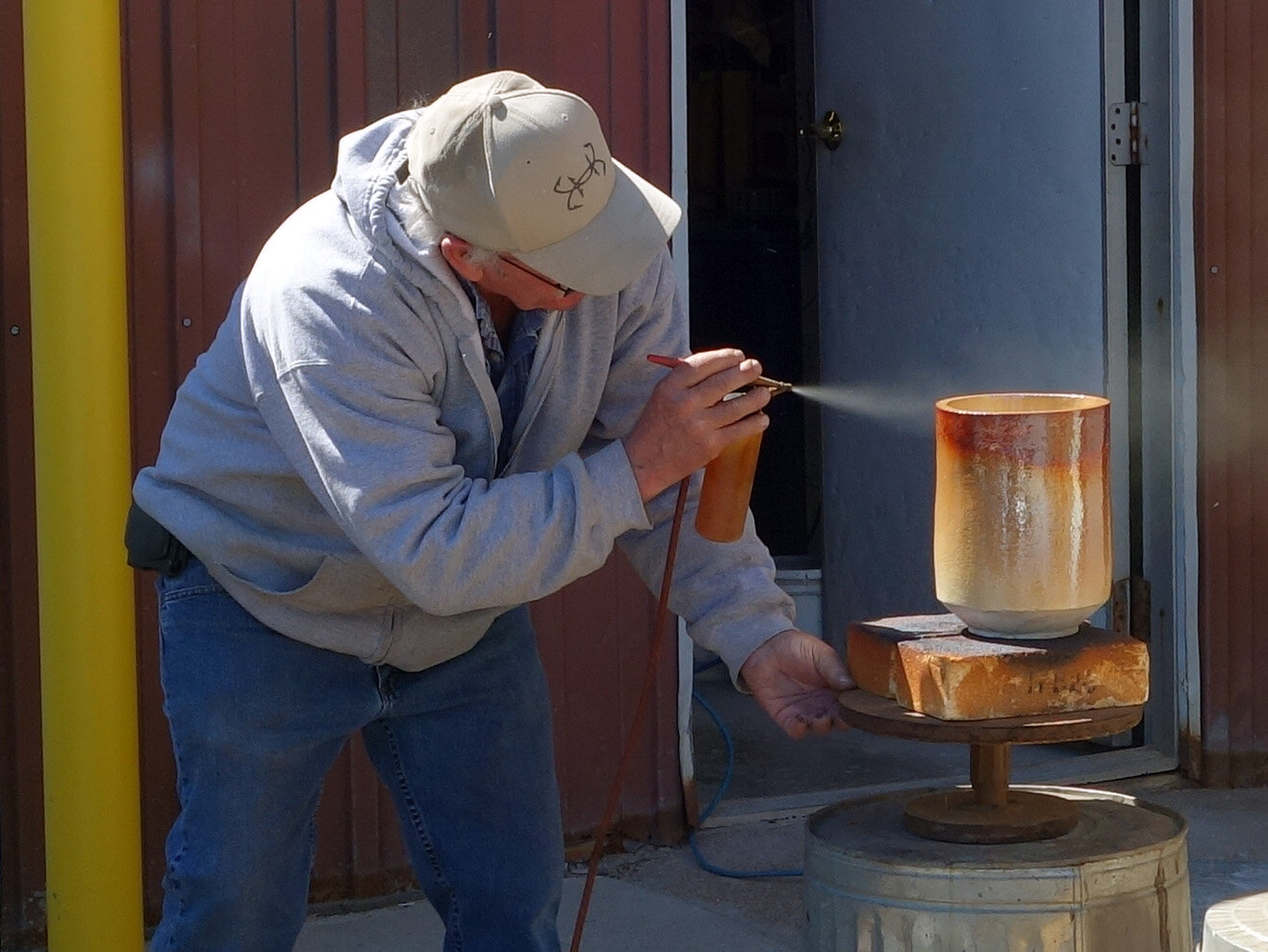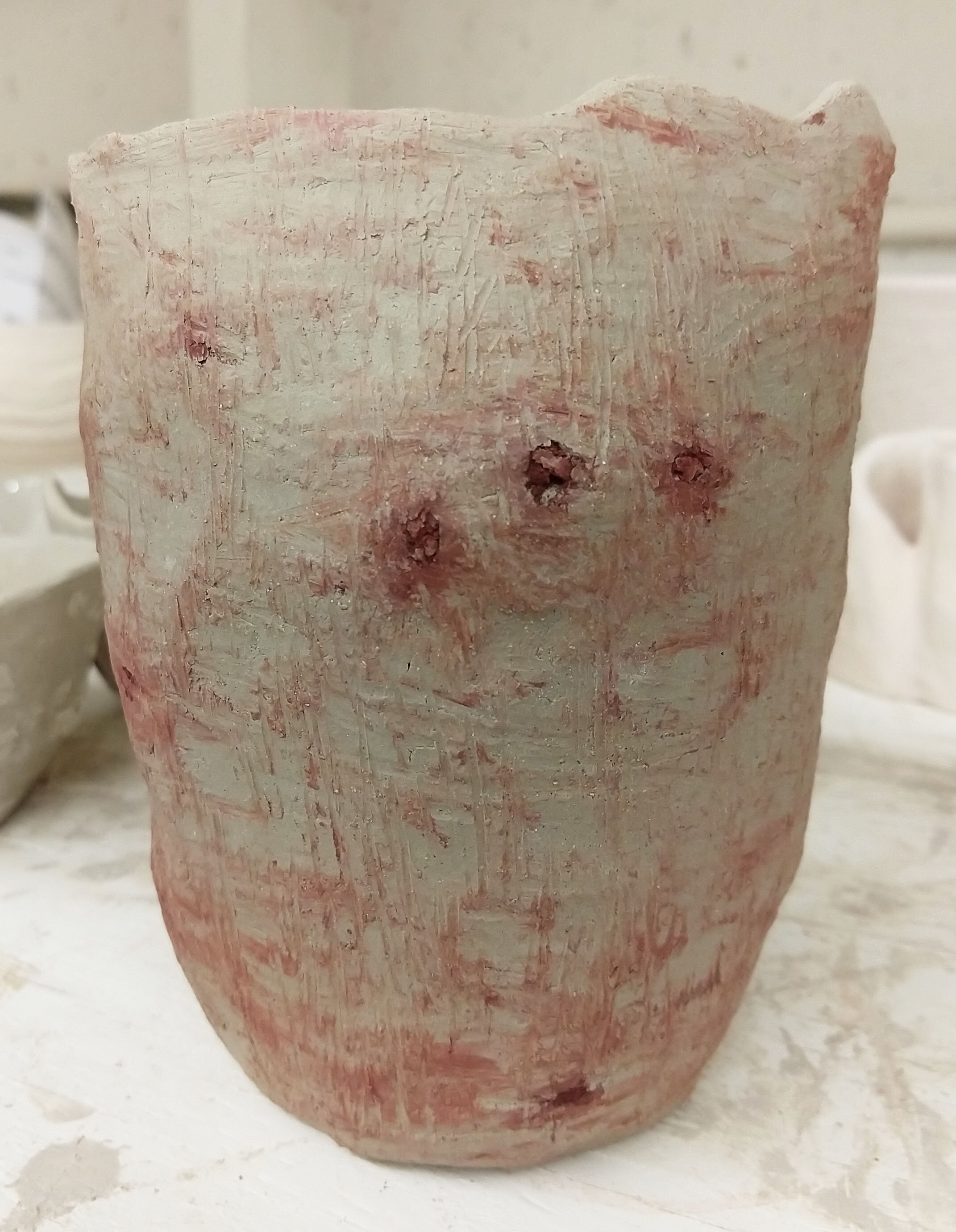I began my journey with ceramics in early 2020, and now four years later I’ve hit a new milestone. I mostly loaded and then fired a kiln all by myself - and I didn’t burn down the university!
It doesn’t take four years to learn to fire kilns independently, of course - I could have prioritized it much sooner, but we’ve always had a ceramics faculty member who ran the kiln room. Managing it during the active school year means not only firing the kilns, but also taking into consideration the sizes and types of ceramics being produced as well as the student artists’ timelines in order to load the kilns in the best possible way. This meant I’d usually be getting in the way if I loaded my own pieces in wherever I wanted or independently decided to fire a kiln. Plus, since my pieces are not tied to assignment due dates, mine are almost always the least important to get into a specific load! I therefore followed the same protocols as the students: dropping my finished pieces off on the waiting-to-be-loaded shelves and letting our ceramics instructor Paul take it from there. However, over time I’ve asked about and observed how the process works.
Over academic breaks, I’m often the only one aside from Paul who’s still producing ceramics. This winter break, I made a sufficient quantity of items that it seemed to me it’d be less work for him if I just loaded my work myself into each kiln - so I did. Then, between the two of us we made enough work that we filled the glaze kiln almost full… and last night, I glazed some more pieces which filled it completely.
All the dominoes had aligned: his ceramics class has only just started gearing up, so none of them are using glaze yet. I’d mostly loaded the kiln myself with a few additions from him, and we had maximized the space. It was ready to fire, I knew how to fire it, and Paul wasn’t around. I took the plunge and did it myself!
I came in this morning and checked it, and everything still looked good! Paul also happened to be in and he confirmed that I did it correctly. It still needs to cool in order to unload - I always knew it took a couple of days, but I’d never tracked the time super closely until now. I began this load at approximately 6pm on Monday and it was a Cone 6 high-fire glaze load, meaning it was set to reach approximately 2230°F. By 5pm on Tuesday it was in the cooling process and had gotten down to 358°F. That’s still too hot to unload; my research indicates that you can rush to begin unloading around 200°F by wearing full protective body coverings and being careful about where you place the pieces, but that sounds like a lot of bother and can risk cracking damage. Instead of returning late this evening, I’ll just wait until tomorrow when it has fully cooled down to ambient temperature.
